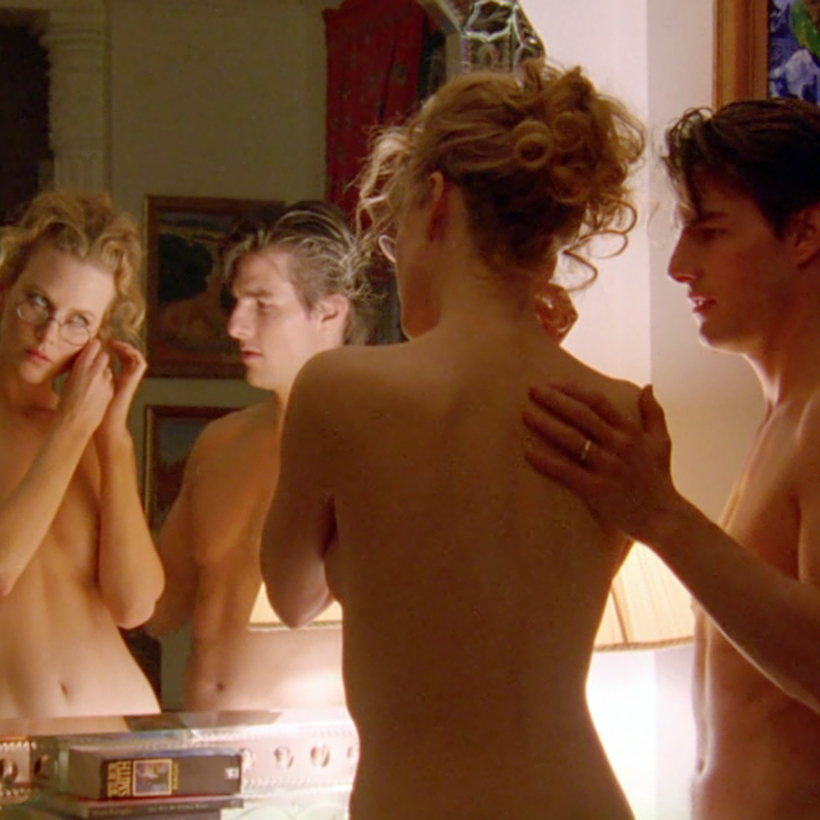When Stanley Kubrick died, in 1999, he left behind not just paradigm-changing film masterpieces like Dr. Strangelove, The Shining, and 2001: A Space Odyssey, but also more than a thousand boxes filled with screenplay drafts, letters, fan mail, photos, and memorabilia. Kubrick’s archive, at the University of the Arts in London, is a treasure trove, and new material keeps drifting in. While researching my Yale Jewish Lives volume about Kubrick, I found many gems in the archive. One day, I struck pay dirt: script outlines from the mid-1950s centering on his turbulent second marriage to the ballet dancer and designer Ruth Sobotka.
I knew already that Kubrick had been heavily influenced by Sobotka. When he met her, in 1952, she was far ahead of him in her artistic career. She had studied with Lee Strasberg, acted in avant-garde film, and danced for Balanchine’s New York City Ballet, where she also designed costumes for The Cage, Jerome Robbins’s savage, hieratic shocker of a ballet. When Kubrick and Sobotka married, she left dance to work as the art director on his third movie, The Killing (1956).

Sobotka liked to wear a glamorous bathrobe with a fur collar, and she looked, said one friend, “like something out of ‘Anna Karenina’ … incredibly beautiful.” Sobotka had escaped Austria as a child in the face of Hitler’s Anschluss, and she introduced Kubrick to the European art and literature she had grown up with. She was a handful, demanding and perfectionist like Kubrick himself. She clung relentlessly to him, insisting that she become his artistic soulmate on his film projects.
Sobotka was a handful, demanding and perfectionist, and she clung to Kubrick.
Just as relentlessly, Kubrick withdrew from Sobotka. He hinted at his battles with her in several script outlines, including The Married Man, where he wrote, “Can you imagine the horrors of living with a woman who fastens herself on you like a rubber suction cup? Whose entire life revolves around you morning, noon and night?” In a script treatment called Jealousy, Kubrick sketched notes on a couple’s catastrophic fight: “YOU’LL BE SORRY … HYSTERIA VENOMOUS … ADMIT INFIDELITY. LOUSY LOVER. SCREAMING[.] HUSBAND LEAVES.” In a later scene, the wife leaves her husband, who “sobs like a frightened child” and calls his mother.
Detailing another movie idea, Kubrick wrote, “This marriage should be a kind of sado-masochistic Dostoyevskian set up” in which the husband wants “to humiliate the worshiping girl and thus lacerate himself.” You can’t help but think of The Shining, with Jack Nicholson’s gonzo male fury aimed at the quivering, submissive, yet surprisingly resourceful Shelley Duvall.

Marital turmoil usually doesn’t rear its head in Kubrick’s work, except for The Shining and Eyes Wide Shut. Kubrick’s film universe is masculine, focused on macho rebellion and rabid power trips, even in the uncanny futuristic vision of 2001: A Space Odyssey. But when couples do appear in Kubrick, they lay open a psychic wound that dates from his marriage with Ruth Sobotka.
When, possibly urged by Sobotka, Kubrick read Dream Story, by the Viennese author Arthur Schnitzler, he knew instantly he would make it into a movie; what he didn’t know was that it would take him four decades. Kubrick spent those years with Christiane, his third wife. Their marriage was happy, stable, and uneventful, but the same pressures that inhabited Kubrick’s four-year relationship with Ruth were still there, only muted.
Dynamic Duos
Kubrick died just a few days after completing Eyes Wide Shut, his still controversial last movie. He worked 18-hour days on the shoot, as he did on all his films, but he was weakening near the end, and he slept with an oxygen tank next to his bed. Production lasted 16 months, the longest continuous shoot in movie history. During that time, Kubrick bonded with Tom Cruise and Nicole Kidman, entered into their heads, and played them off against each other. Kubrick got to know Kidman better than her parents did, she said.

The movie that came out of this ordeal is cool, single-minded, implacable in its beauty, and, let’s face it, an acquired taste for some. The core of Eyes Wide Shut isn’t its ornate orgy scene but the keenly wrought dialogues between Cruise and Kidman, which turn on the flick of a gesture, the accent of a word. Kubrick has passed beyond the Sturm und Drang of The Shining to show us the quiet discontent that ripens within marriage, when both parties have become detectives of the other’s desires. Eyes Wide Shut is the movie Kubrick had to make so that he could work through the emotional anguish that first hit him more than 40 years earlier, during his roller-coaster ride of a marriage to Ruth Sobotka.
Cruise and Kidman’s own marriage would last only two more years. Eyes Wide Shut’s disconcerting last scene is hopeful, though, and it ought to be, since Stanley and Christiane Kubrick remained steady partners right up to his death. We don’t usually think of Kubrick as a director absorbed by the relations between men and women, but he was, and The Shining and Eyes Wide Shut are his two superb films about marriage. Without Ruth and Christiane, he would never have made them.
David Mikics’s Stanley Kubrick: American Filmmaker is out now from Yale University Press

